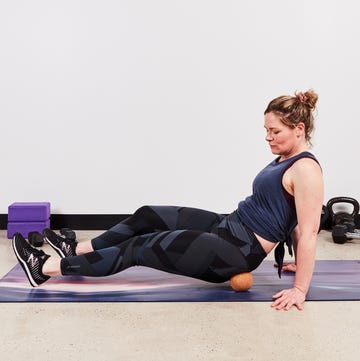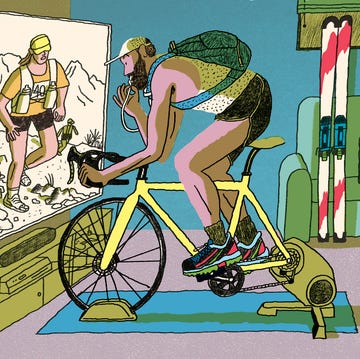I’m running my third half-marathon this spring and a marathon this fall. Do you have any tips for recovering after the races? Thanks, Breanne
Good luck in your races this season, Breanne. You are wise to think about recovery, as it is a very important ingredient to continued progress without detours. Some things are best explained visually, so I created these downloadable four-week recovery programs for the half and full marathon distances.
Please keep in mind that every runner’s plan is unique and this is a guideline to the flow of a recovery rather than an exact plan. You can tweak it to make it your own. The idea is to emphasize the intensity and volume as you heal, because poor recovery is a common mistake that’s easy to make when we’re in the postrace high.
Also important to mention is that every recovery is like a fingerprint—unique—and the secret truly is to listen to your body and serve up what it asks. For instance, you may run the half at a harder effort, or the weather ends up being hot and demands much more from you. This race will likely take more TLC than a race that is in perfect weather (54 degrees) where you race less intensely.
Recovery begins the minute you cross the finish line and extends for weeks post race. Read this column to learn what to do in the first 24 hours to speed the rate of recovery.
If you notice, both start with a week of a lot less running and light effort, short duration cross-training. This allows the body to heal while maintaining fitness and increasing circulation to aid in recovery.
As the weeks progress, the running duration increases while the intensity remains easy to continue to healing process while building back running time. Trying to build all at once stresses the body as it fights for energy to recover. The recovery usually wins out and aches and pains occur if you push too hard, too soon.
The final week should look like a typical training week with volume and intensity restored. This process is what I call a “reverse taper,” as you’re building in a similar way to how you tapered down to race day.
Use this as a log to track what works for you. As you evolve as an endurance runner, you’ll create your own personal recovery recipe and learn the ins and outs of what your body needs based on how you feel.
Also important to note (and then I’ll get on to the recovery plans) is that recovery is more than just resting or running less—it’s eating quality foods; getting in high-quality sleep, flexibility work, or massage; and chilling in general. Training is highly structured and builds over time to race day. A calm, relaxed recovery phase restores your body, refreshes your mind, and provides some time off from the demands of progression. Just like a good night’s sleep, recovery is the secret ingredient many of us are missing out on. It takes patience and faith—but it works.
Here are the four-week recovery plans as promised. Feel free to download them and use them as a log—just remember to make it yours.
Download the Four-Week Half-Marathon Recovery Plan here.
Download the Four-Week Marathon Recovery Plan here.
If you’re looking to learn how to recover for multiple races in a season, read this column. It will teach you how to balance the art of recovery and training while racing multiple events in one season.
Happy Trails.
Register for the 2013 Peace Marathon and run or walk 26.2 miles in a day, a week or a month to benefit the children affected by the Boston bombings. Join the movement here.
Ask me one of your great running Qs on the Ask Coach Jenny Facebook Page or email me.
Meet me on Twitter.













